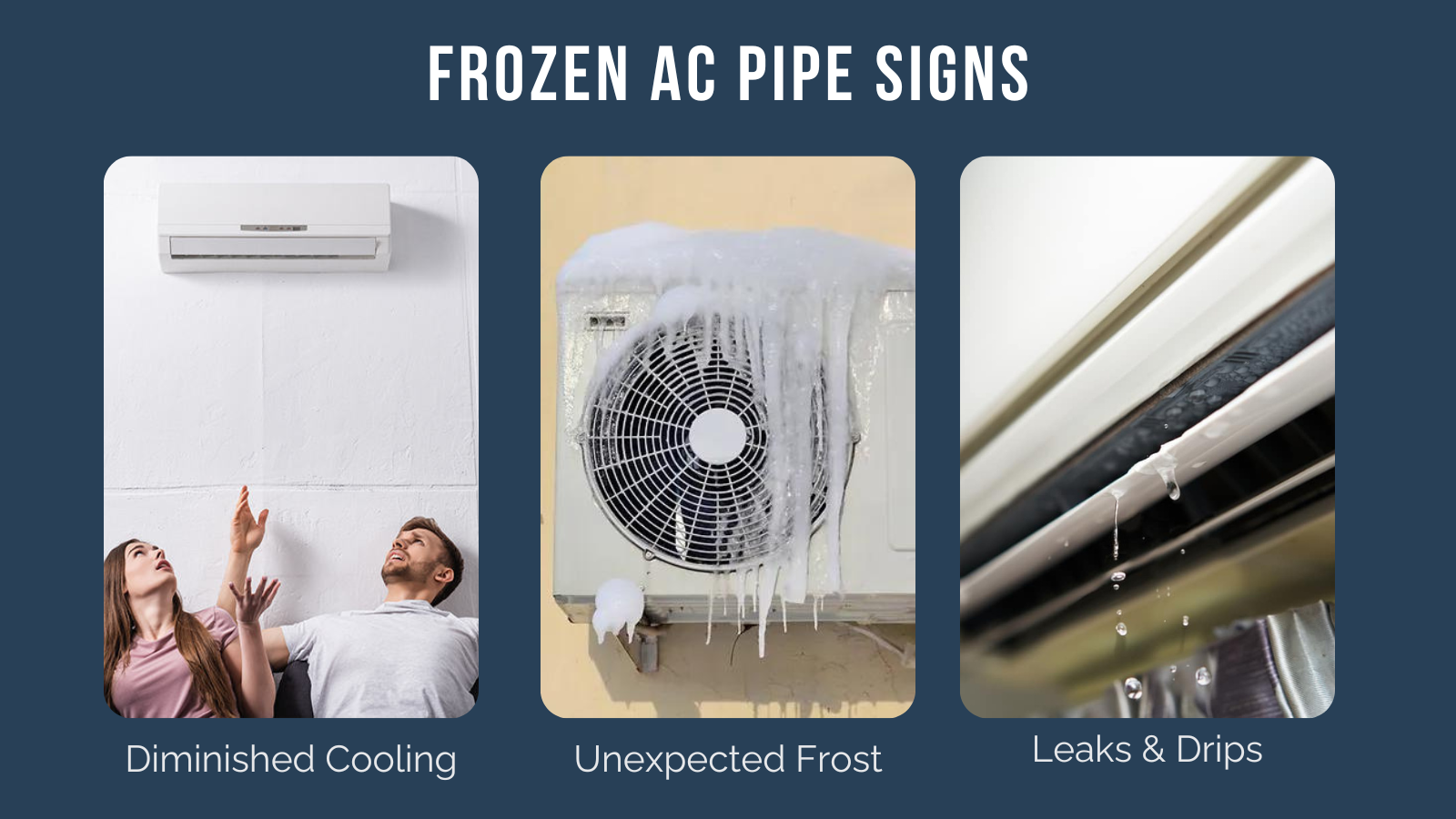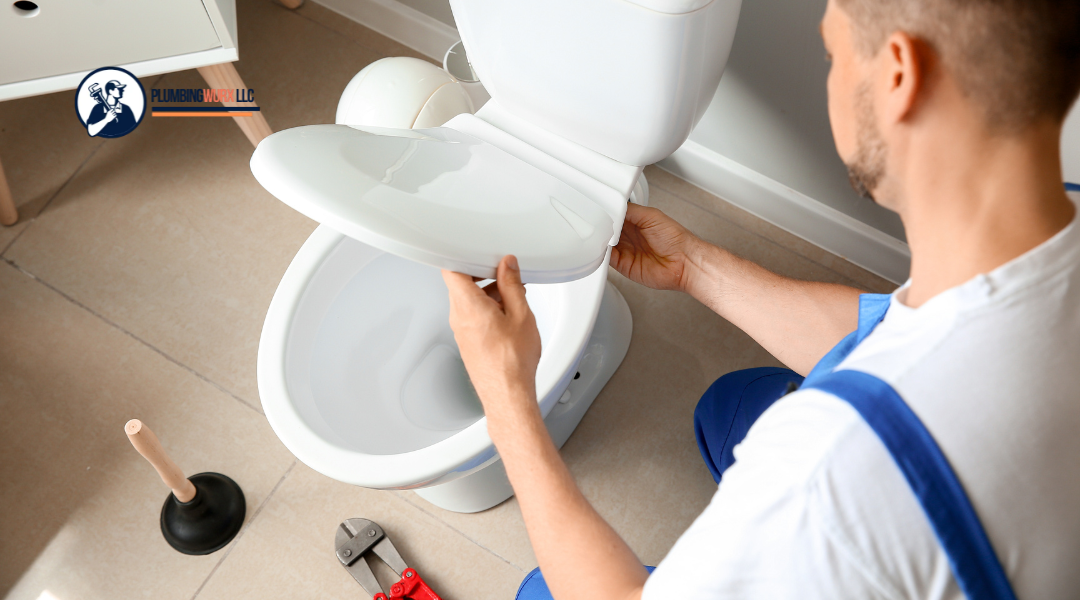It’s a blistering hot day, sweat trickling down your spine, and all you crave is the sweet relief provided by your air conditioner.
You hasten to crank it up, anticipating a fresh breeze … only to be met with an unnerving silence and a frozen pipe that doesn’t respond.
Yes, even amidst scorching summer, your AC transforms into its mini winter zone, leaving you in a sweaty situation!
This frosty debacle is a typical concern in many households, whether winter or summer, causing discomfort and a potential threat to your beloved cooling system.
But fear not! Understanding the reasons behind a frozen AC pipe isn’t reserved for savvy technicians.
Let’s demystify the causes, risks, and surefire solutions so you can nip the frozen AC pipe problem in the bud and prevent future icy encounters.
What are the Signs of a Frozen AC Pipe?
The subtle indicators of a frozen AC pipe might easily slip under your radar, especially if you’re not tuned into the covert cries of your air conditioner.
Reduced Cooling Performance
One of the first and often most frustrating signs of a frozen AC pipe is an apparent dip in the unit’s cooling performance.
The air blowing out of the vents is not as cold as it should be, or the system is struggling to maintain the set temperature.
This is due to the ice accumulation on the evaporator coil, which impedes the coil’s ability to absorb heat from the surrounding air.
Your AC will go into overdrive trying to cool your space without much success, leading to a notably higher energy bill.
Unusual Frost Buildup
An unexpected ice buildup is a straightforward sign that you’re dealing with a frozen AC pipe.
Healthy, smoothly operating AC units should never display visible ice on the pipes or the evaporator coil.
The frost buildup primarily occurs when the refrigerant flowing through the coils gets excessively cold due to low refrigerant levels or restricted airflow, causing the humidity in the air to freeze upon contact.
This buildup creates a cascade of issues, further reducing the unit’s cooling ability and damaging the system components.
Water Leaks and Condensation
The sheet of ice enveloping the AC pipe will yield to the ambient temperature and begin to melt, causing water leaks and excessive condensation around the unit.
It’s vital to address the water leaks promptly as they pose risks of mold growth and water damage to your property.
Why is a Frozen AC Pipe Risky?
As the ice envelops the pipes, it obstructs the smooth flow of refrigerant, the vital agent responsible for your AC’s cooling prowess.
The extra ice causes the system to strain, attempting to cool your space while battling against a frozen barrier, culminating in excessive wear and potential breakdown of your system’s components.
The inevitable thawing process of the ice poses substantial water damage risks to your property, as leaks and drips compromise structural elements. Excess moisture paves the way for mold and mildew, jeopardizing indoor air quality and posing potential health risks.
Therefore, a frozen AC pipe isn’t merely a chilly inconvenience; it’s a hazard to your comfort and property.
Can You Prevent AC Pipe Freezing?
Guarding against AC pipe-freezing revolves primarily around routine maintenance and vigilant observation:
- Ensure your air filters are regularly checked and replaced to safeguard against restricted airflow, a common culprit behind the freezing phenomenon.
- Observe your evaporator coils; ensuring they are clean and unobstructed aids in preventing ice formation.
- Scheduling professional maintenance to ensure the refrigerant levels are optimal and the system is void of any leaks is pivotal.
Embracing a disciplined approach towards AC maintenance keeps the frost at bay and enhances your unit’s efficiency and lifespan, saving you money and headaches in the long run.
What to Do if Your AC Pipe Freezes
- Begin by turning off your AC to halt further refrigerant flow, allowing the built-up ice to melt and curbing additional strain on the system.
- Utilize towels or containers to manage the melting water, mitigating potential water damage.
- Allow the frozen pipe to thaw naturally to prevent any potential damage. Once thawed, inspect the immediate surroundings for any water damage or mold formation.
- The subsequent step is addressing the cause, whether a dirty filter, low refrigerant, or another issue. This will require professional insight to accurately diagnose and remedy.
- Develop a consistent AC maintenance strategy to secure an uninterrupted flow of cool, refreshing air.
Maintain a Problem-Free AC System!
With PlumbingWurx, LLC, you can ensure that your comfort remains undisturbed and your cooling system thrives all year round.
Don’t let a minor issue become a big problem. Contact us today at (301) 264-7577 or visit us at 1101 Opal Ct, Hagerstown, MD 21740. We’re a family-owned business and pride ourselves on our top-notch expertise and customer service.












0 Comments